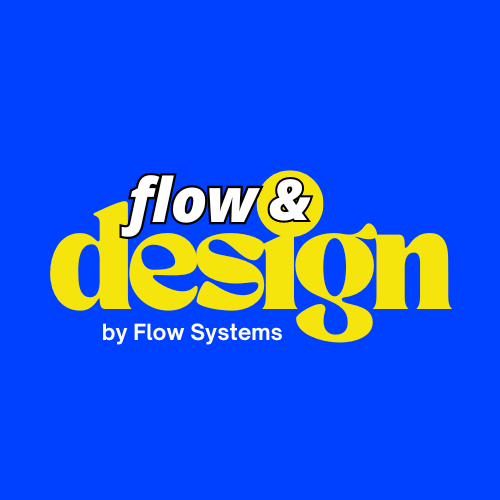User Experience (UX) is a term that has gained significant traction in the digital world, but what does it really mean? This blog post aims to demystify the concept of UX, delve into its various components, and explore its importance in today’s digital landscape.
Chapter 1: The Basics of User Experience
What is User Experience (UX)?
User Experience, commonly known as UX, is the holistic experience a user undergoes when interacting with a product, service, or digital platform. It’s not just about the visual design or interface; it’s about how the user feels during and after the interaction. UX aims to provide positive experiences to enhance user satisfaction and encourage repeat usage or loyalty.
Components of User Experience
- User Research: This is the foundation of any UX design project. User research involves understanding the target audience, their needs, and their pain points. Methods include surveys, interviews, and usability testing.
- Information Architecture: This involves organizing and structuring the content in a logical manner. Good information architecture makes it easier for users to find what they’re looking for.
- Interaction Design: This focuses on creating engaging interfaces with well-thought-out behaviors. It considers elements like button placement, color choices, and micro-interactions that make the user experience smooth.
- Usability Testing: This is the evaluation phase where the design is tested with real users to identify any usability issues before the final product is launched.
- Visual Design: While not the only component, the visual aspect of UX is crucial. It includes typography, color theory and schemes, and images that create an emotional connection with the user.
- Content Strategy: The words used in the design also contribute to UX. Good copywriting guides the user and provides them with the information they need.
- Accessibility: A good UX design is inclusive and accessible to all users, including those with disabilities. This involves using accessible color schemes, font sizes, and navigation methods.
The UX Process
The UX design process is iterative, involving multiple stages like research, prototyping, testing, and implementation. Each stage provides insights that may lead you back to a previous stage for further refinement.
- Discovery: Understand the user needs and business goals.
- Wireframing: Create low-fidelity sketches of the interface.
- Prototyping: Develop a working model of the design.
- User Testing: Collect feedback from real users.
- Implementation: Work with developers to bring the design to life.
- Evaluation: Post-launch, collect data to assess the design’s effectiveness.
By understanding these basic components and processes, you’ll be better equipped to create user experiences that not only meet but exceed user expectations.
Chapter 2: Importance of User Experience in Design
Why User Experience Matters
In today’s digital age, the user experience is more than just a buzzword; it’s a necessity.
With countless options available at their fingertips, users are less tolerant of poor design and usability. A well-crafted UX not only satisfies the user but also drives business metrics like engagement, conversion rates, and customer retention.
Business Impact
- Increased Conversion Rates: A user-friendly design simplifies the user journey, making it easier for them to complete actions like signing up, making a purchase, or sharing content.
- Customer Retention: A positive user experience encourages repeat visits and long-term customer relationships. It’s far more cost-effective to retain existing customers than to acquire new ones.
- Reduced Bounce Rates: A confusing or poorly designed interface will drive users away. Good UX keeps them engaged, reducing the likelihood of them leaving your site prematurely.
- Brand Loyalty: Users are more likely to return to a website or app that offers a pleasant experience. This loyalty often translates into word-of-mouth recommendations.
Emotional Connection
A great UX design goes beyond functionality; it creates an emotional connection with the user. Through the use of colors, imagery, and storytelling, you can evoke emotions that align with your brand’s values and message.
Competitive Advantage
In a saturated market, a well-designed UX can set you apart from your competitors. Users are more likely to choose a product or service that offers a superior experience, even if it comes at a higher price point.
Ethical Considerations
Good UX design is also ethical design. It respects the user’s time, privacy, and accessibility needs. It avoids dark patterns that manipulate or deceive users into taking actions they might not intend to.
In Summary
The importance of UX in design cannot be overstated. It has a direct impact on your business metrics and plays a crucial role in building a strong brand identity. Investing in UX is not just a design decision but a smart business strategy.
Read What is Web Design? The Complete Guide
Chapter 3: Advanced Concepts in User Experience
Microinteractions
Microinteractions are the subtle yet powerful details that enhance the user experience.
These include elements like hover effects, loading animations, and feedback sounds. They may seem trivial, but they contribute to a smoother and more engaging user journey.
User-Centric Metrics
Advanced UX design goes beyond traditional metrics like page views or click-through rates. It focuses on user-centric metrics such as task success rate, error rate, and abandonment rate to provide a more accurate picture of the user experience.
Personalization and AI
Artificial Intelligence and machine learning algorithms can be employed to personalize user experiences. From product recommendations to personalized content, AI can make the user feel seen and valued.
Multi-Platform Experience
In an increasingly connected world, users often switch between multiple devices.
Advanced UX design considers the multi-platform experience, ensuring seamless transitions from mobile to desktop to wearable technology.
Voice User Interface (VUI)
As voice-activated devices like Alexa and Google Home become more prevalent, designing for voice user interfaces is becoming crucial. VUI design considers factors like speech recognition, natural language processing, and auditory feedback.
Ethnographic Studies
Understanding the cultural and social factors that influence user behavior can offer deeper insights into user needs and preferences. Ethnographic studies involve observing users in their natural environment to gather qualitative data.
Dark Mode and Accessibility
Advanced UX also considers users with specific needs, such as those who prefer dark mode to reduce eye strain or those who require screen readers for accessibility.
A/B Testing and Iterative Design
Continuous improvement is a hallmark of advanced UX.
A/B testing allows designers to compare two versions of a webpage or app to determine which performs better in terms of user engagement, conversion rates, and other metrics.
Read What is Web Development? A Comprehensive Guide to Building the Web
Chapter 4: The Future of User Experience
Augmented Reality (AR) and Virtual Reality (VR)
The integration of AR and VR into UX design is set to revolutionize the way users interact with digital platforms. These technologies offer immersive experiences that can be particularly useful in fields like education, healthcare, and real estate.
Blockchain Technology
Blockchain has the potential to make transactions more secure, transparent, and decentralized. This could significantly impact UX design in financial services and any other sector requiring secure data transactions.
Quantum Computing
With the advent of quantum computing, data processing and problem-solving could become exponentially faster. This could lead to real-time analytics and instant user feedback, making the user experience more responsive and personalized.
Emotional Recognition Technology
Future UX could involve technology that recognizes user emotions through facial expressions, voice modulation, and even heart rate. This could allow for real-time mood-based customization.
Internet of Things (IoT)
As IoT devices become more common, UX designers will need to consider how these devices interact with each other and the user. This could lead to more integrated and intuitive user experiences.
Sustainability
With an increasing focus on sustainability, future UX design will likely incorporate eco-friendly practices, both in the design process and in the final user experience.
Neuro-UX Design
Understanding how the human brain works can offer valuable insights into user behavior. Neuro-UX design involves using neuroscience principles to create more intuitive and engaging user experiences.
Zero UI
The concept of Zero UI involves interfaces that require minimal human interaction. Voice commands, gesture controls, and even thought-based commands could become the norm.





